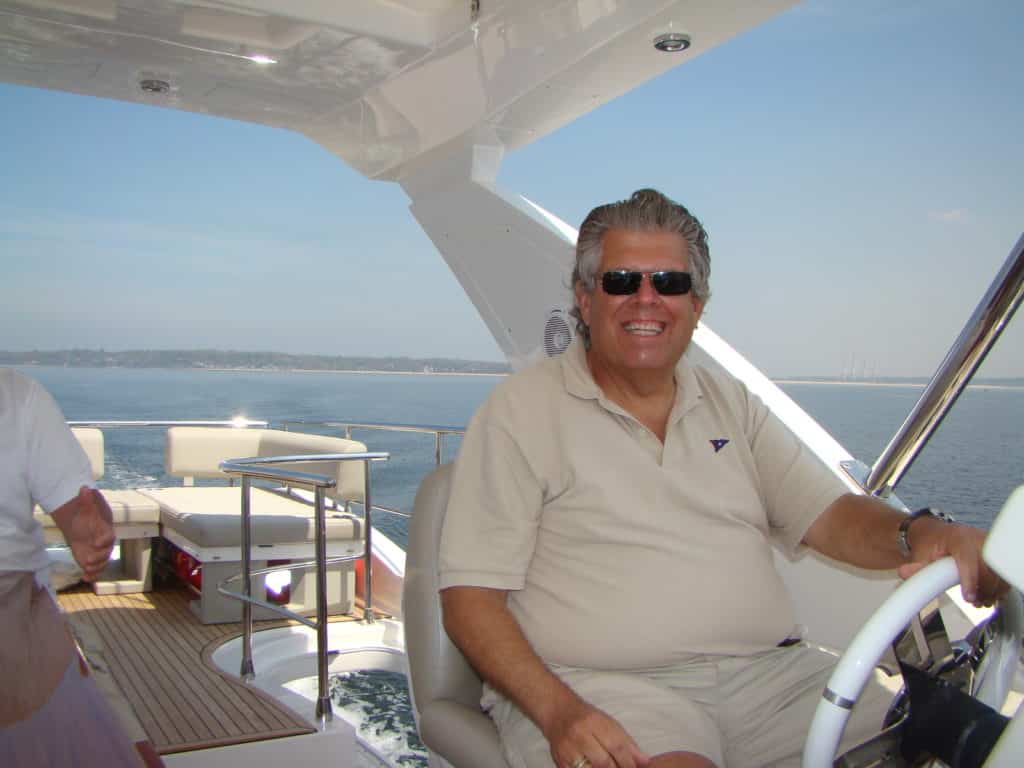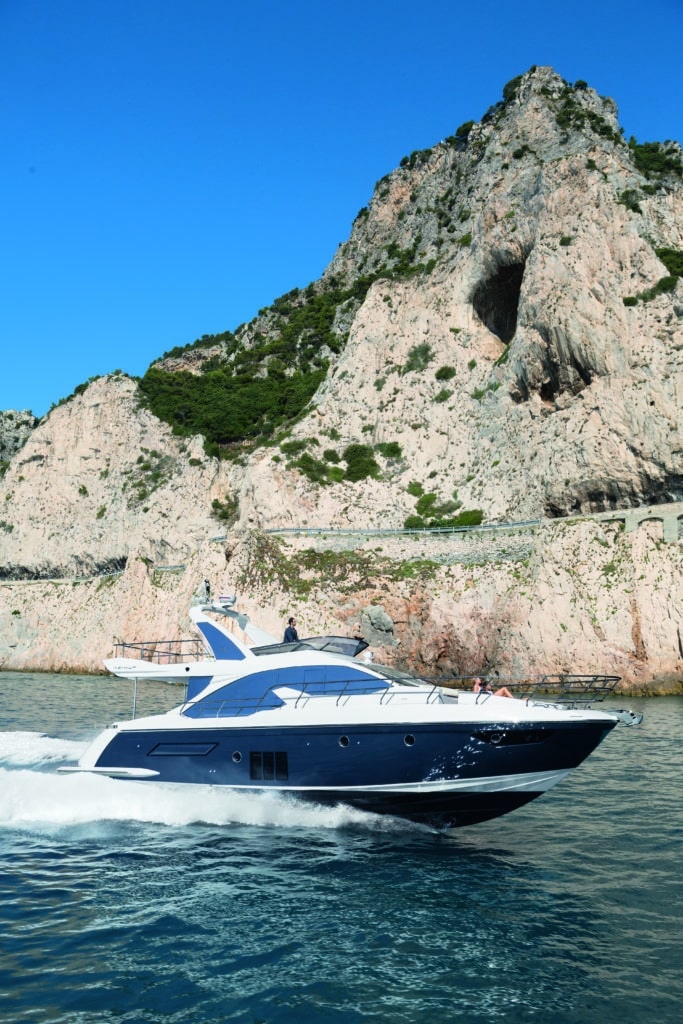
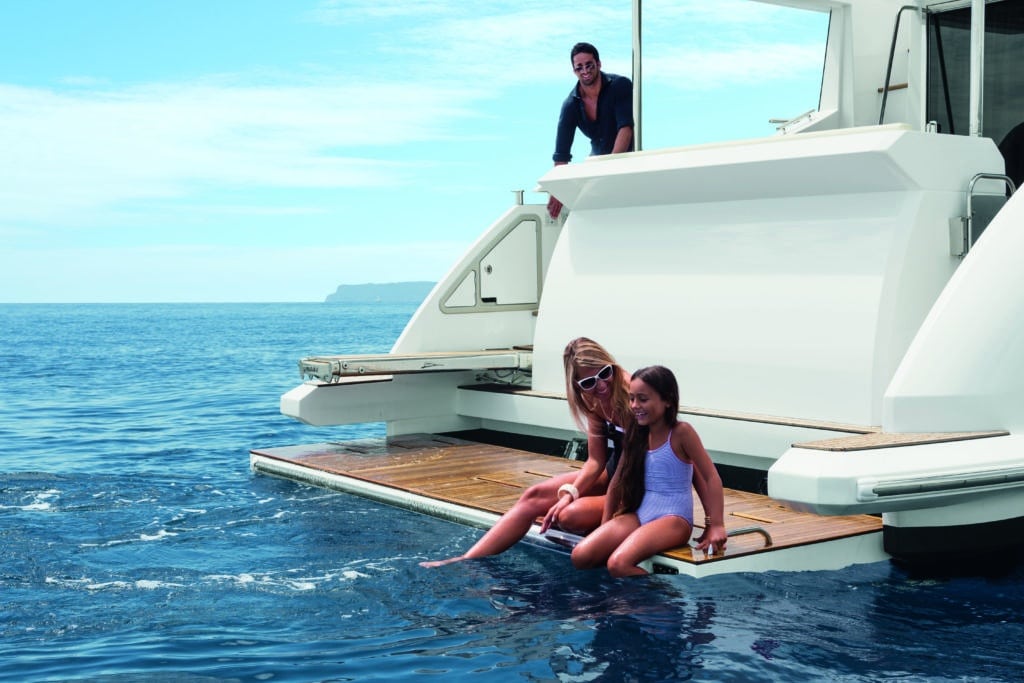
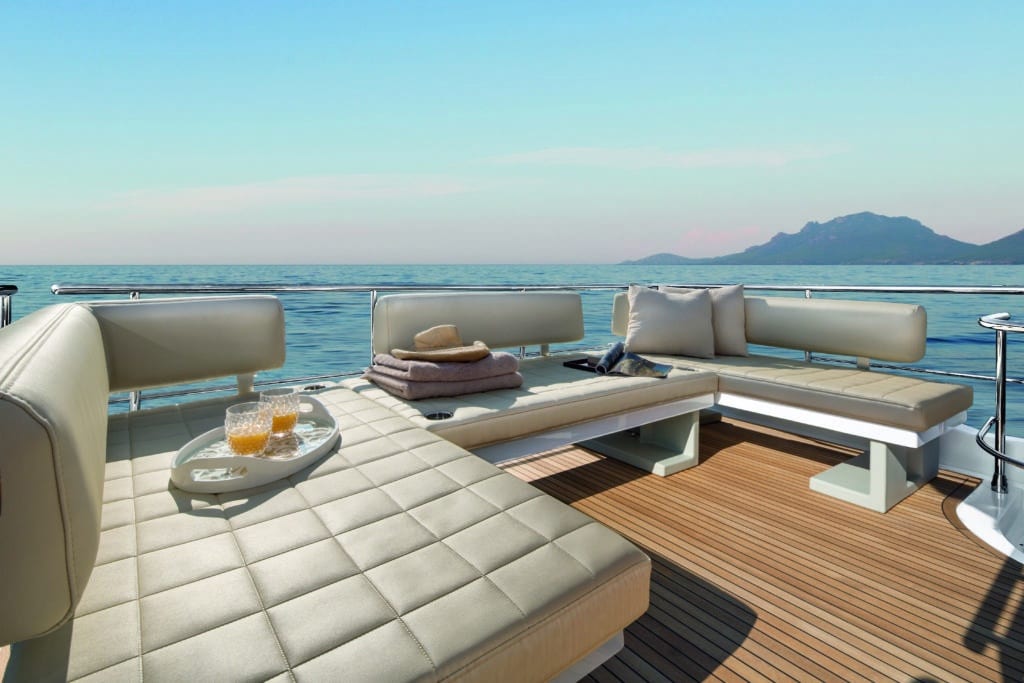
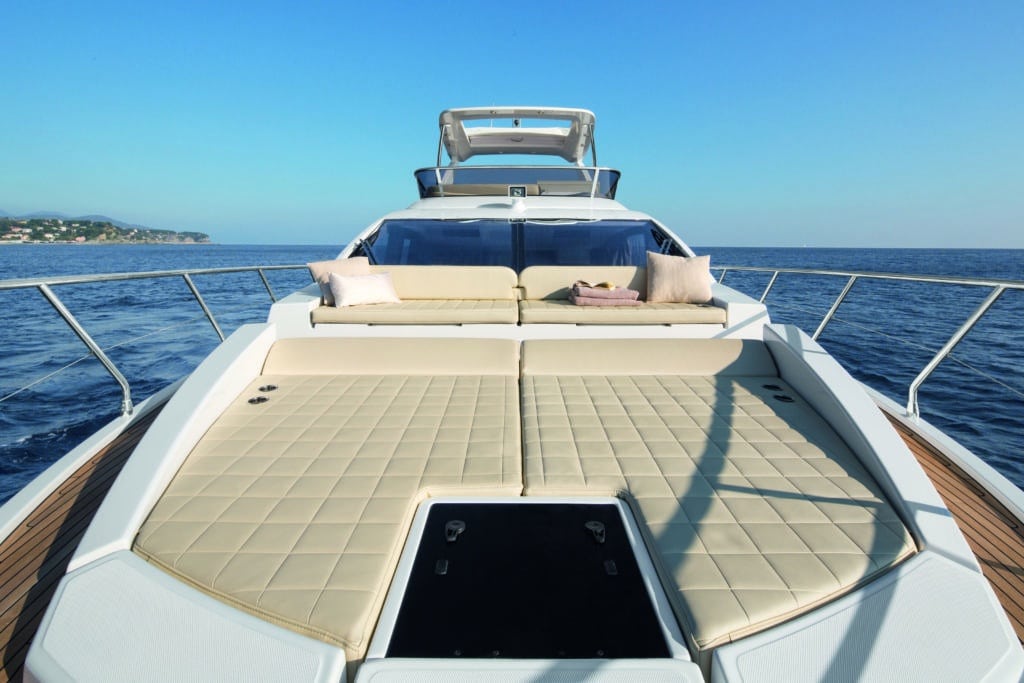
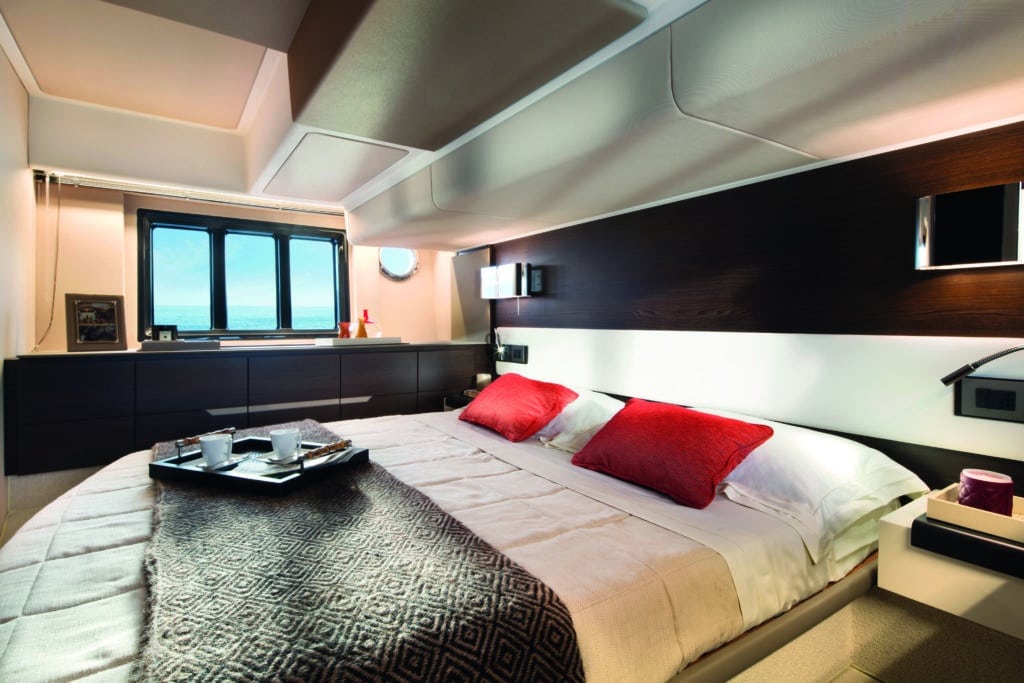
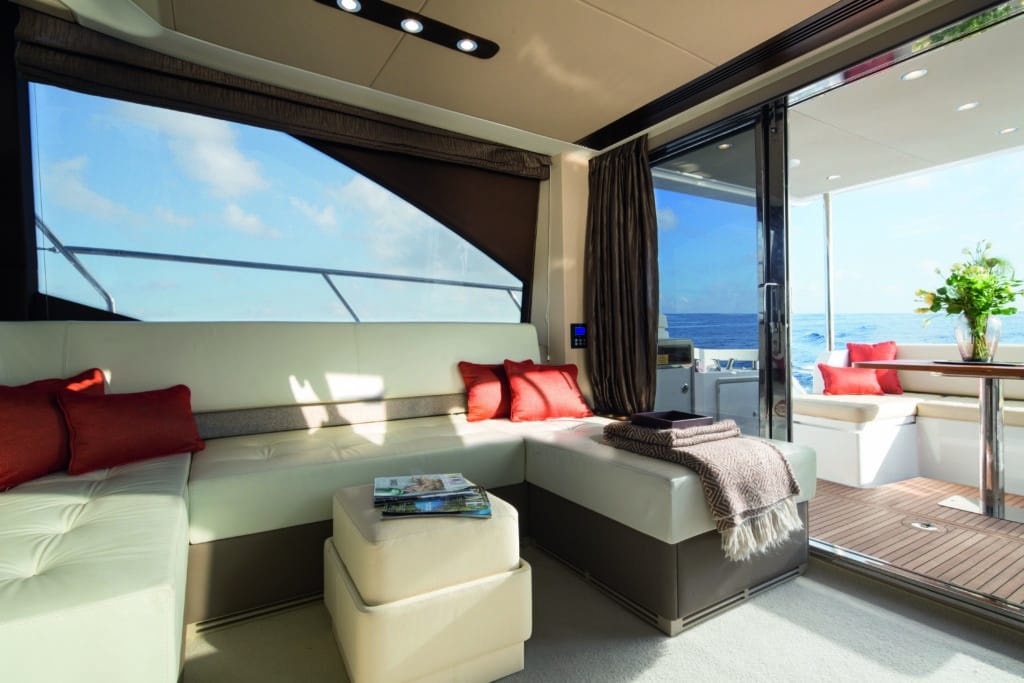
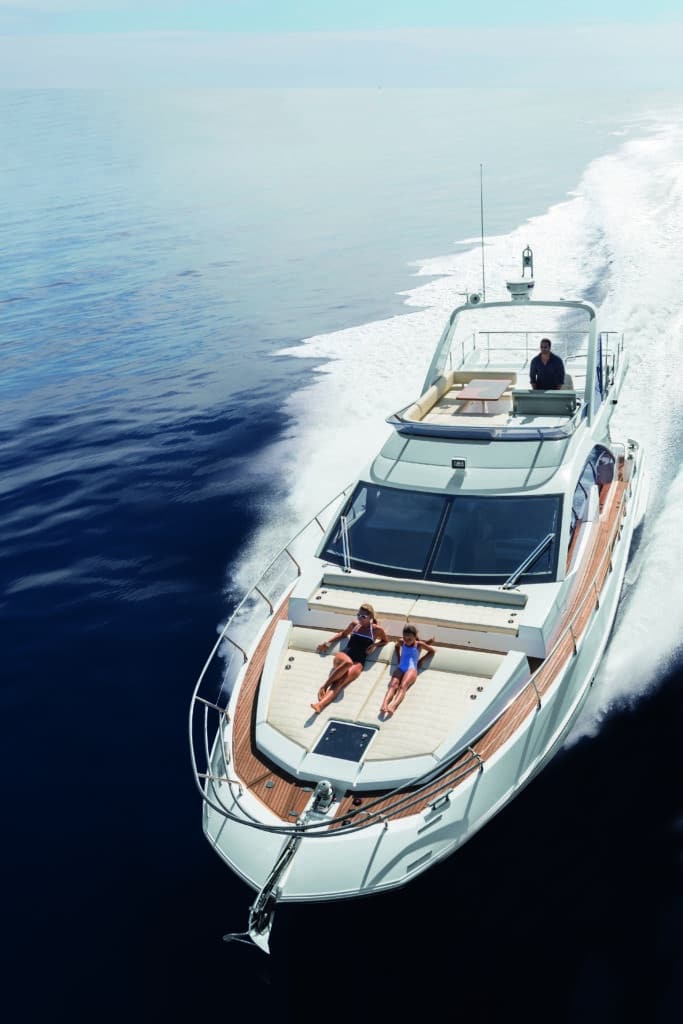
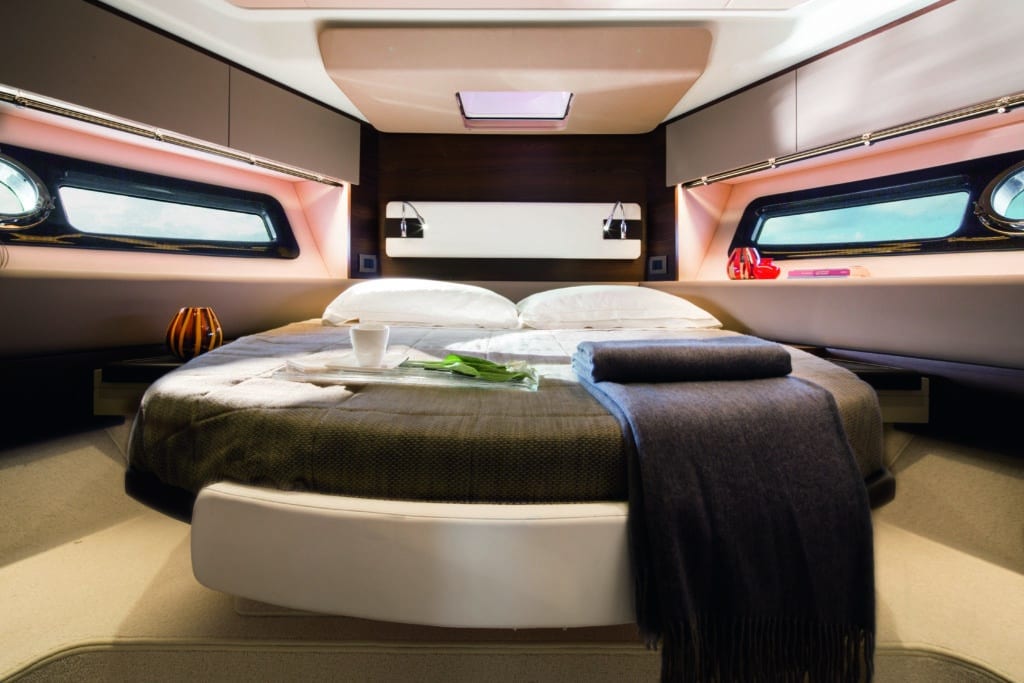
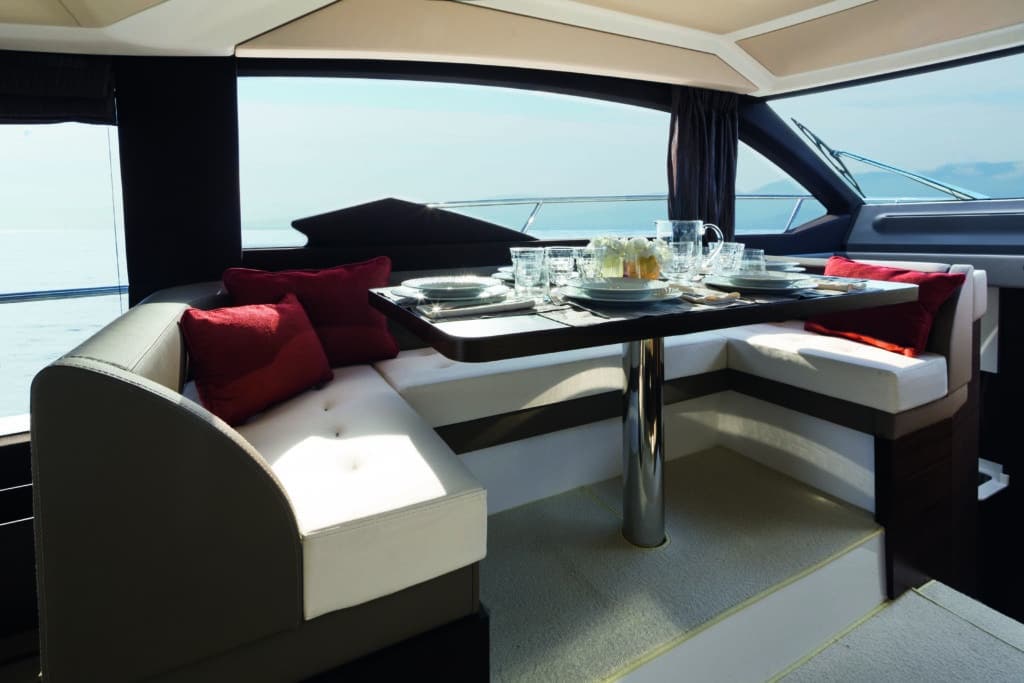
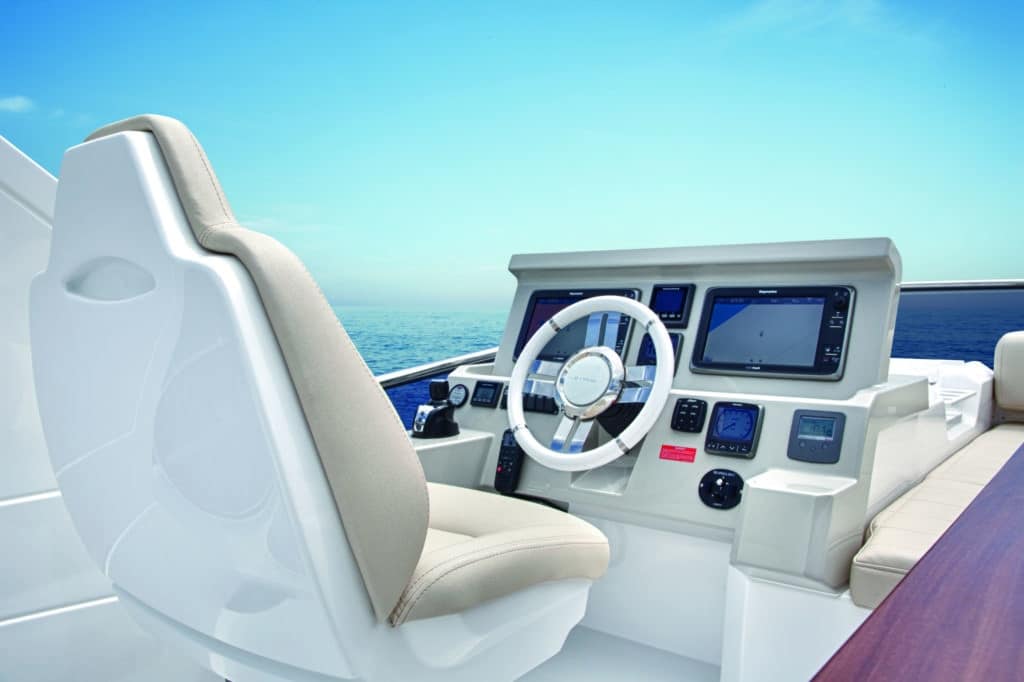
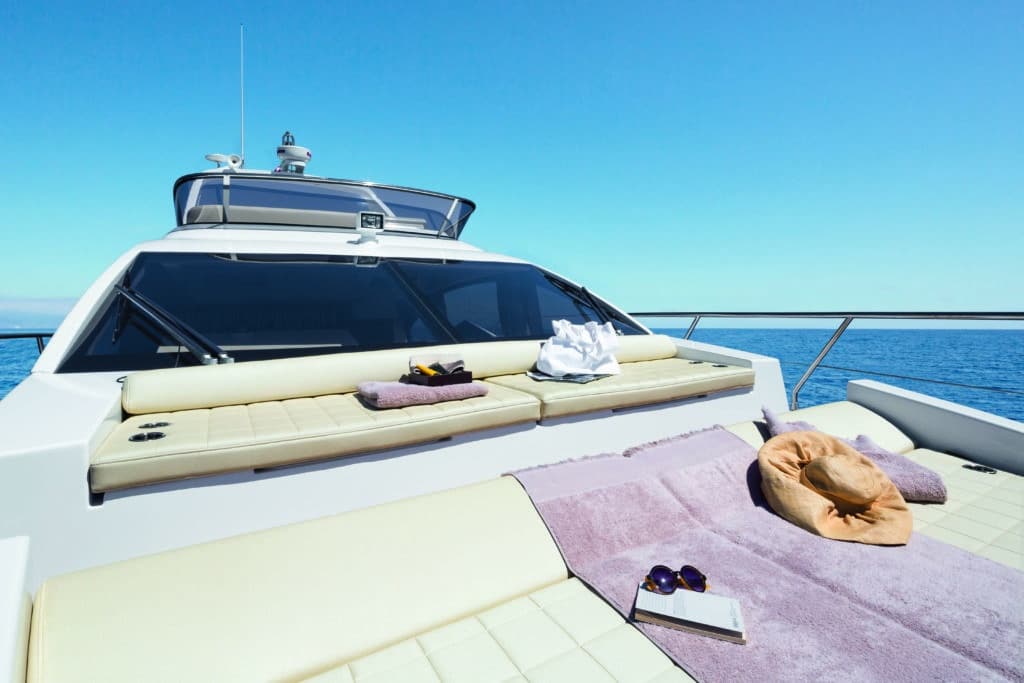
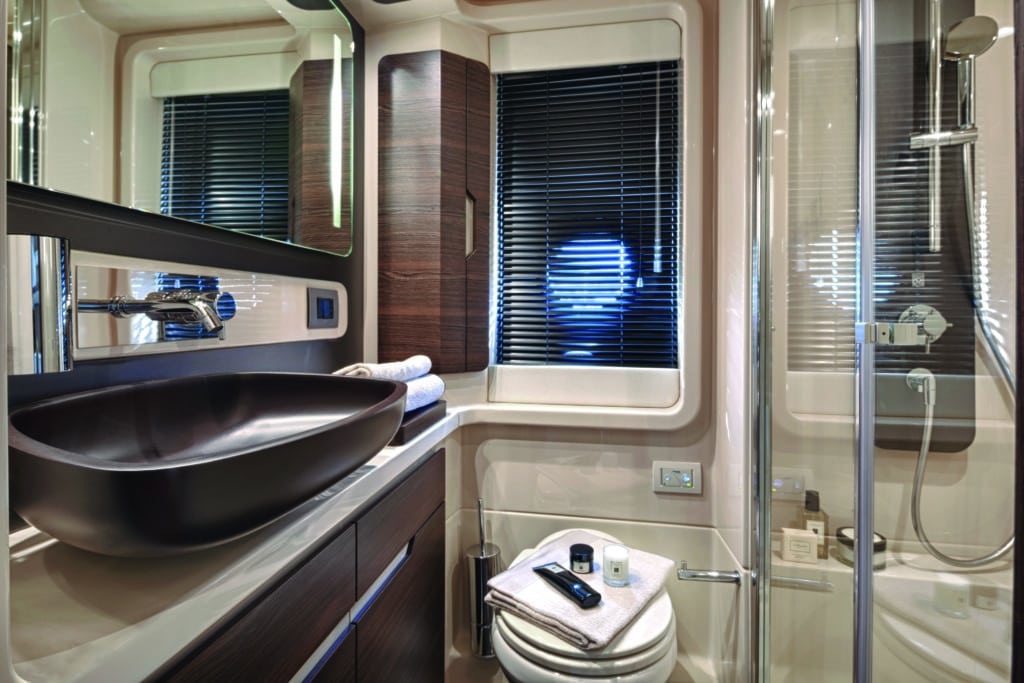
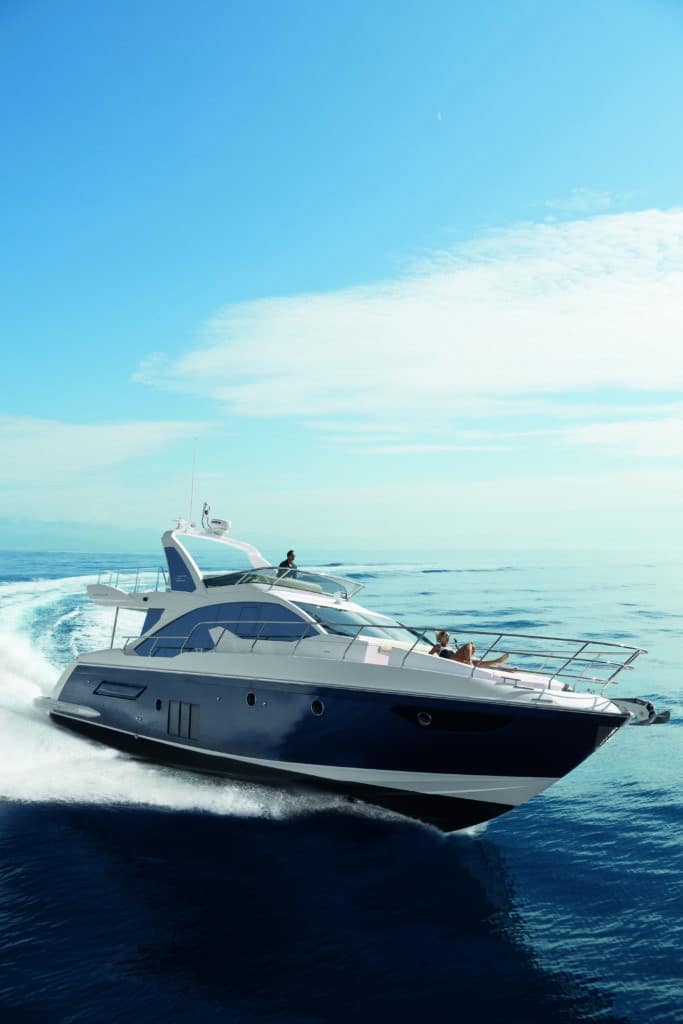
As I drove along the New York waterfront hills of Long Island’s north shore, also known as the Gold Coast, the names Vanderbilt, Pratt, Morgan, Astor and the famously fictional Gatsby came to mind. This pristine section of shoreline borders Long Island Sound, which offers direct access to lower Manhattan and a straight shot to Connecticut. These attributes have made this area a serious yachting playground for decades. I looked out to the salt and imagined the scene during the days when industry titans with the aforementioned names plied these waters on their motoryachts and commuter craft. My final destination was the serene, mooring-field-filled Huntington Harbor, a perfect setting to run Azimut Yachts’ latest born-for-cruising vessel, the 50 Fly.
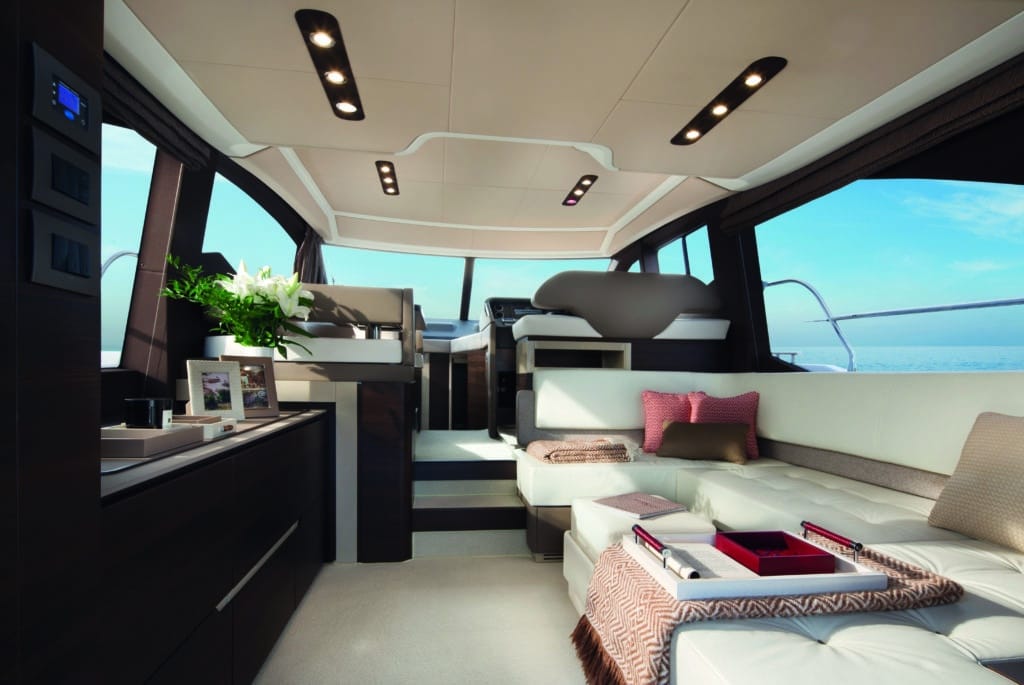
When I first took in this yacht’s sleek profile from on high, she instantly stood out on the dock at the Huntingon Yacht Club, and she looked right at home amid the stunning waterfront mansions across the harbor. Her optional “Miami silver” metallic hull glistened in the sun like the seemingly glassine sound. This was the first 50 Fly sold in North America, a fact that made her four-time Azimut owner, Les Lerner, quite proud. (See “Joy of Discovery”)
With an exterior designed by Stefano Righini, the 50 Fly is based on the builder’s popular 80-footer and retains some of her key eye-popping elements such as unbroken, porpoise-shaped, single-pane mirrored windows in her superstructure. Aside from being aesthetically pleasing, the windows enhance views from the salon and helm, add an aggressive look to her profile and let natural light bathe the yacht’s interior.
It is an interior that comes from Carlo Galeazzi and that is at once contemporary and warm. This feeling is created, in part, by the use of cream-tone leather cushions on the settees and seats, accenting the decapé oak furniture. My test 50 Fly featured a barefoot-welcoming and optional whitened-oak salon sole. (Carpet is standard.) A three-stateroom layout with a full-beam master amidships easily accomodates a large cruising family.
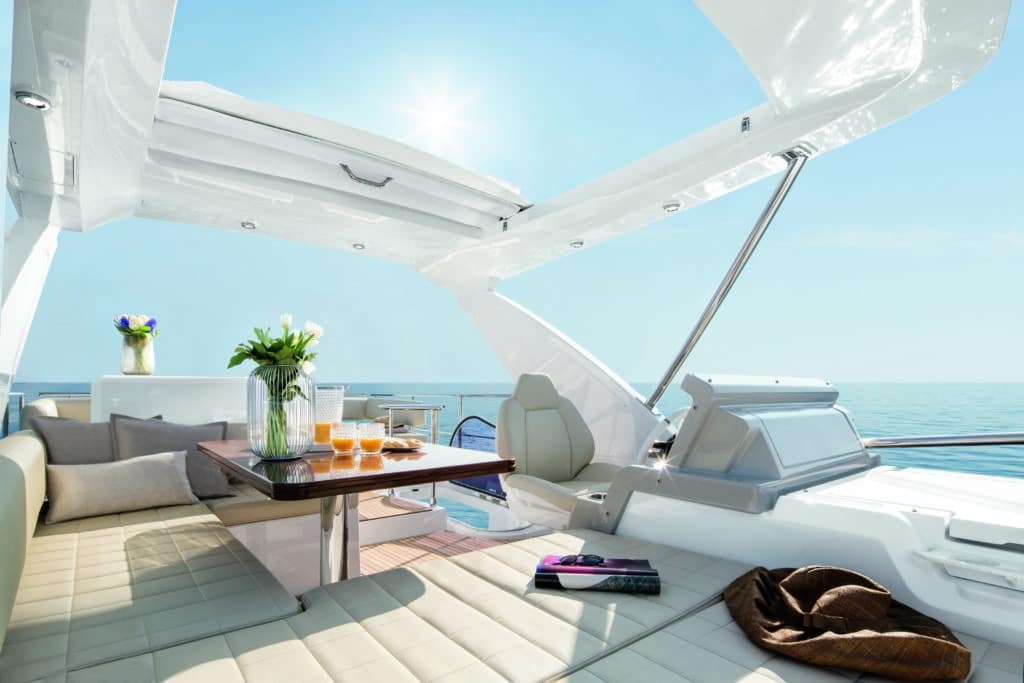
But the 50 Fly offers more than elegant accouterments and impressive woods and leathers. She is a performer too.
Sporting a planing-hull form with 12-degree aft deadrise, her twin 670-horsepower Volvo Penta diesels (the only engine option) easily propped my test vessel onto plane on the tabletop-flat sound after a little input from the single-lever controls. In short order, I had her aimed toward the Connecticut shoreline, cruising effortlessly across the water at 25 knots. Her top average speed was a spirited 32 knots. She turned a full circle in about three boat lengths, and even without her optional Seakeeper gyro engaged, she offered only a moderate inboard heel when I turned the wheel hard over.
This 50 Fly was equally nimble in the harbor and around the slips too, thanks to a Xenta joystick system. It utilizes the vessel’s bow thruster and gears to give the helmsman fingertip control in close-quarters situations.
Joystick controls. Emissions-conscious power plants. Bright-as-day multifunction displays. Body-length hull-side windows. Gyro stabilization. High-tech composite construction. Yachts and yachting have come a long way since this part of the Northeast first became a boating playground, but the feeling of freedom the Azimut 50 Fly offers Lerner and all other yachtsmen is as timeless as the water she navigates across.
And I suspect the titans who once cruised this area would approve.
